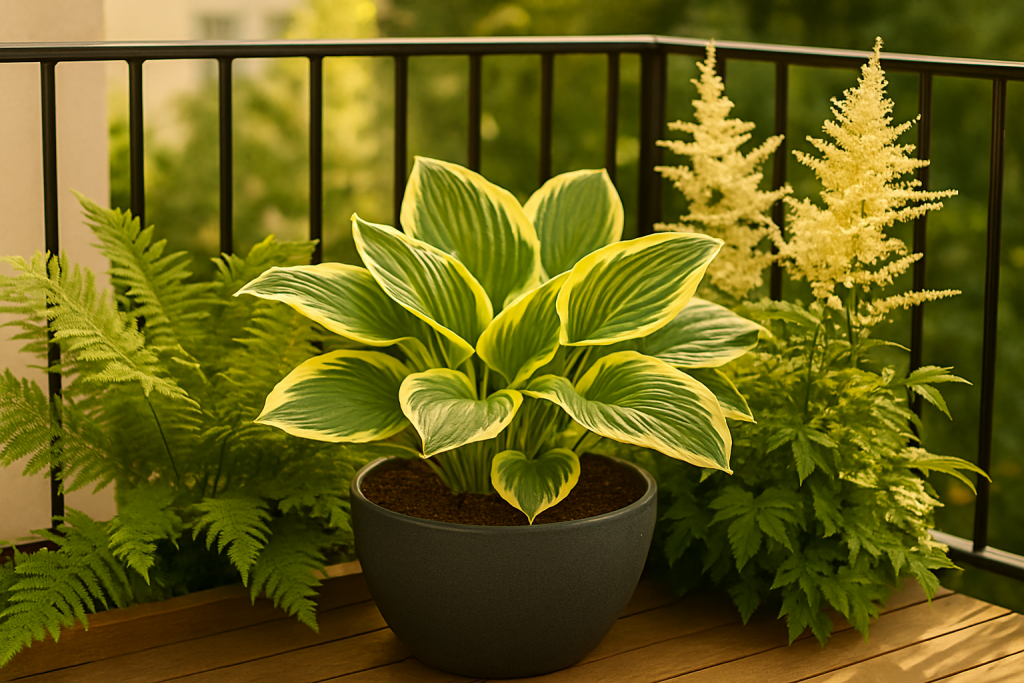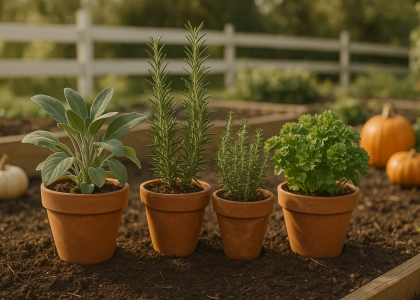Why Choose Hosta for Your Balcony Garden?
Hostas are among the most beginner-friendly shade plants you can grow. Known for their lush foliage and calming presence, they are perfect for:
- Shady balconies or corners where sun-loving plants fail.
- Adding texture and color contrast with their green, blue, or variegated leaves.
- Creating a low-maintenance, healing garden vibe in small spaces.
If you’re struggling with plants that wilt in limited sunlight, hostas are your go-to solution.
How to Grow Hostas in Containers
Even if you don’t have a backyard, you can still grow hostas successfully in pots or balcony raised beds.
Container Choice
- Use wide, shallow pots or wooden troughs. Hostas spread sideways more than deep.
- Ensure good drainage holes to prevent soggy roots.
Soil Mix
- Rich, loamy soil with compost or leaf mold works best.
- Add perlite or bark chips for drainage.
Watering Tips
- Keep soil evenly moist—not dry, not soggy.
- Balcony gardeners: use saucers carefully. Empty excess water after rain.
Light Needs
- Partial to full shade is ideal.
- In northern climates (e.g. Scandinavia, UK), hostas can tolerate morning sun.
- In southern US (e.g. Florida, Texas), protect them from midday heat to avoid scorched leaves.
Seasonal Hosta Care
Spring
- Start with fresh soil and apply slow-release fertilizer.
- Divide crowded hostas if roots fill the pot.
Summer
- Watch for slugs/snails—they love hosta leaves. Use organic traps (beer traps, copper tape).
- Mulch lightly to retain soil moisture.
Autumn
- Enjoy hosta foliage turning golden yellow before dormancy.
- Cut back dying leaves to tidy pots.
Winter
- In cold climates (USDA zones 3–7), pots may need insulation or moving to sheltered spots.
- In milder zones, hostas overwinter easily outdoors.
Design Ideas: Healing Balcony Corners
Want to transform your shady balcony into a serene retreat? Pair hostas with:
- Ferns for layered green textures.
- Astilbe for feathery flowers in shade.
- Impatiens for bright pops of color.
Pro Tip: Place hostas near a seating area. Their wide leaves soften urban edges and create a calming, nature-inspired corner.

FAQ: Common Hosta Questions
Q: Can hostas grow indoors?
A: They can, but they thrive best outdoors where they experience seasonal cycles.
Q: How often should I divide hostas in pots?
A: Every 3–4 years, or when the pot looks crowded.
Q: Are hostas pet-safe?
A: Hostas are toxic to cats and dogs if ingested. Keep pots out of reach of pets.
Final Thoughts
Hostas prove that even the shadiest corners of your balcony can be lush and beautiful. With the right container, soil, and watering, they reward you with years of low-maintenance, healing greenery.
Ready to try? Start with one hosta and watch how it transforms your balcony into a cozy retreat.
Free Resource for Readers
Download our Autumn Balcony Garden Planner (Printable PDF) to track watering, planting, and seasonal care for shade plants like hostas.





